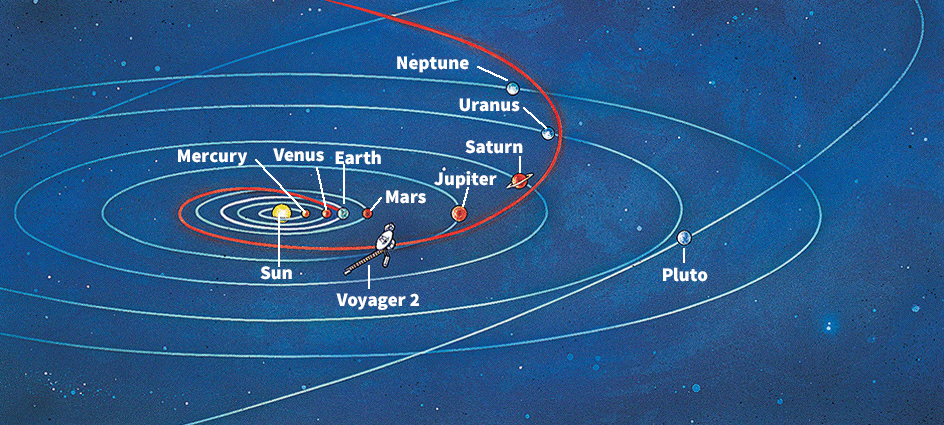Sept. 6-12, 2012, Current Events Lesson Plan
Current Event:
The Voyager 1 spacecraft continued its epic trek to the edge of the solar system on September 5, 35 years after its launch into space. NASA had launched a companion craft, Voyager 2, on August 20, also in 1977. Together, the two probes have worked longer and traveled farther than any other space probes in history. Voyager 2 is now about 9 billion miles (15 billion kilometers) from the sun in the opposite direction from Voyager 1.

The space probe Voyager 2 was launched on Aug. 20, 1977. Its path through the solar system is shown in red. Voyager 2 flew past and photographed Jupiter in 1979, Saturn in 1981, Uranus in 1986, and Neptune in 1989. (World Book illustration by Ken Tiessen, Koralik Associates)
Objective:
The data the two spacecraft sent back to Earth have answered many questions about several planets’ atmospheres, interiors, rings, and satellite systems. The Behind the Headlines news story and related World Book articles explore how the probes are now confirming scientists’ beliefs that the solar system is not perfectly round.
Words to Know:
- heliosphere
- Jupiter
- magnetic field
- NASA
- Neptune
- planet
- Saturn
- solar system
- solar wind
- Uranus
- Voyager spacecraft
Discussion Topics:
1. Information gathered by the Voyager probes forms the basis of the modern study of Jupiter, Saturn, Uranus, Neptune, and their satellites, rings, and magnetic fields. Ask your students what they know about these planets, and then tell them what the two probes discovered. (The probes found geologic activity on two previous known moons–volcanoes on Jupiter’s moon Io and icy geysers on Neptune’s moon Triton. There are also numerous craters on most of the satellites, an ancient record of intense bombardment by meteoroids and comets. Scientists used Voyager data to calculate the density of 17 satellites and to determine the composition of the atmosphere of Saturn’s moon Titan.)
2. Since 1989, the two probes have been exploring the heliosphere, the sun’s magnetic field, and the solar wind. They also recently crossed the region of space that lies just inside the heliopause and may soon reach interstellar space. Print out the following paragraph after leaving a space where you see bracketed, underlined words to see if your students can fill in the blanks to understand the journey of the probes:
The [solar wind] is a stream of charged particles that is created by the sun. The [heliosphere] is a vast, teardrop-shaped region of space created by the solar wind. The boundary of the [heliosphere] is where the particles from the sun push up against the particles of [interstellar space]. [Interstellar space] is the space between stars. The flow of charged particles within and around the sun produces a [magnetic field].
3. Ask your students to use the World Book timelines feature to create a timeline of the probes’ journey, starting from their launch in 1977 and ending with the possibility that they may travel into interstellar space.


